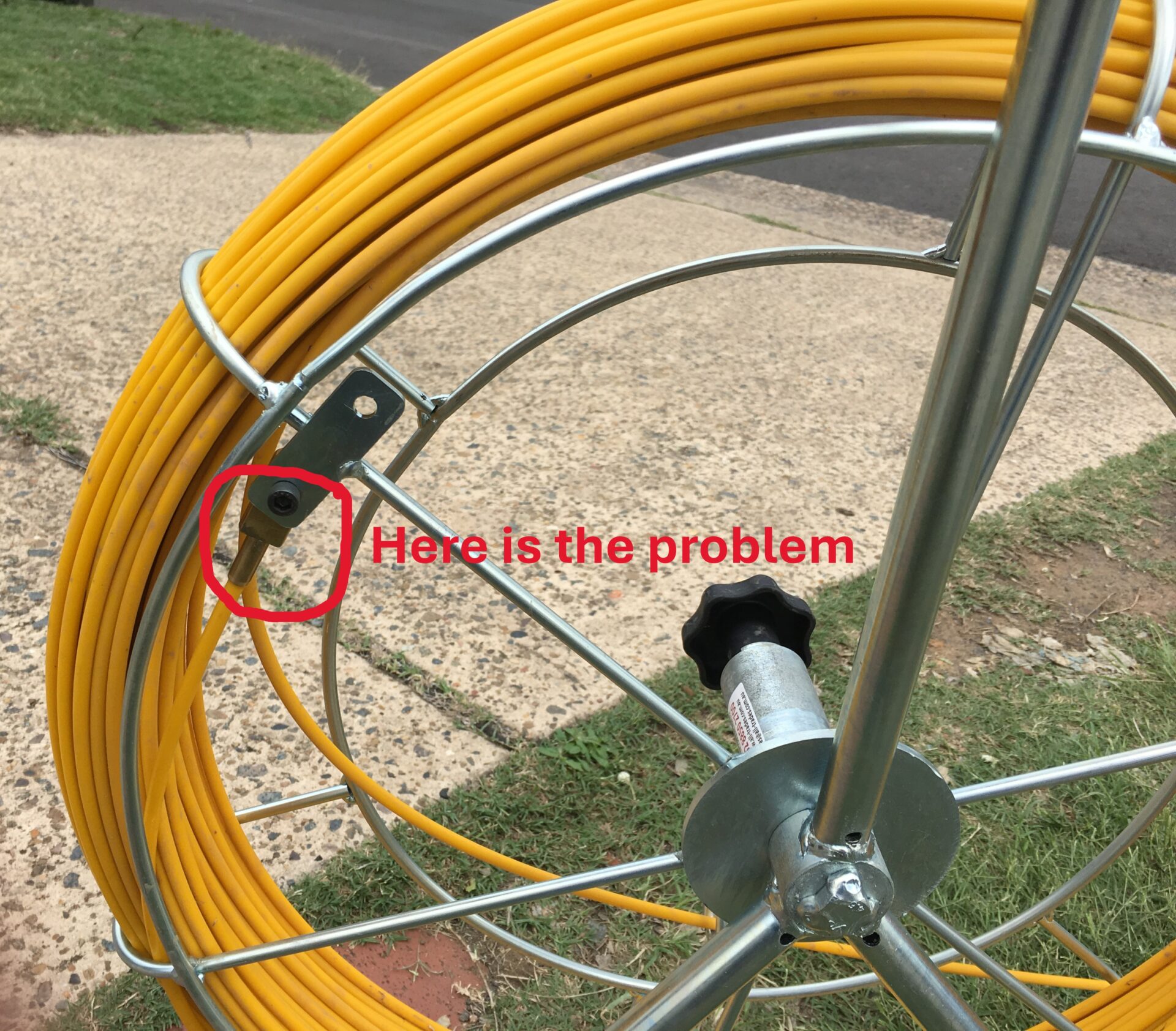By Steve Wood, Senior Trainer and Assessor, CERTLOC
Traceable Rods
How do they work? When don’t they work?
First, it is essential to understand what a traceable rod is. A traceable rod is a flexible rod manufactured in various lengths and diameters, featuring an internal conductive element connected to metallic ends, typically made of brass.
The primary purpose of traceable rods is to locate non-conductive assets, such as fibre optic cables, PVC pipes, and nylon conduits. These materials are cost-effective to install and tend to last longer underground due to their resistance to corrosion and flexibility. In many cases, they perform equally well or better than traditional materials, especially with fibre optic cables. As a result, traceable rods have become indispensable, and required equipment for Certified Locators, particularly as the removal of copper from the Telstra pit and pipe network continues.
To effectively use a traceable rod for electromagnetic field (EMF) location of these assets, we must understand both its functionality and limitations related to EMF detection:
Capacitance: When there is no far-end earthing, the current responsible for creating the electromagnetic field (the signal) is generated through capacitance. Since the traceable rod is inserted into a non-conductive pipe, the end within the pipe lacks ground connection, resulting in no far-end earthing. The current flow depends on two key factors affected by capacitance:
- The quality and amount of the conductive material inside the traceable rod.
- The length of the rod inserted into the non-conductive pipe or duct.
Connection to Carrier: If the rod is mechanically and electrically connected to the carrier, consider the current path (refer to photo). When electrically connected, there is a high possibility of the current traveling through the carrier and grounding instead of flowing down the rod. For instance, if the carrier is on wet grass, it is unlikely to get a signal on the rod. Conversely, if the carrier is on dry concrete, the rod may receive most of the current. The best solution is to disconnect the brass end from the carrier and secure it with a zip tie so that the brass end remains in free air, ensuring the current flows exclusively down the rod.

Far-End Earthing: Ideally, if the rod can be extended to the next pit (although not always possible), connect it to the earth via an earth stake and jumper wire at that location. This far-end earthing will significantly enhance and stabilise the signal throughout the entire route of the target.
Key Conclusions
- Ensure that your rod is not electrically connected to the target.
- Invest in a high-quality traceable rod that is preferably not electrically connected to the carrier, indicating the manufacturer understands the rod’s functionality.
- Extend the rod to the next pit and establish far-end earthing.
- Carry a conduit or PVC pipe. When working at a Telstra manhole or similar setting, insert the pipe into the duct you want to locate. This method will make it easier to insert the rod into the duct you need to locate.
- Test your rod by attaching the red clip of your direct connect leads to one end of the rod and the black clip to the other end of the rod. Plug into the transmitter and turn it on. If you get a good current reading, and probably little or no voltage the rod is in good working order. If you get a zero current reading the rod is defective.
By adhering to these guidelines, the efficiency and accuracy of locating non-conductive assets using traceable rods can be greatly improved.
For more insights and technical updates, be sure to look out for the next edition of Technical Tips for Certified Locators.